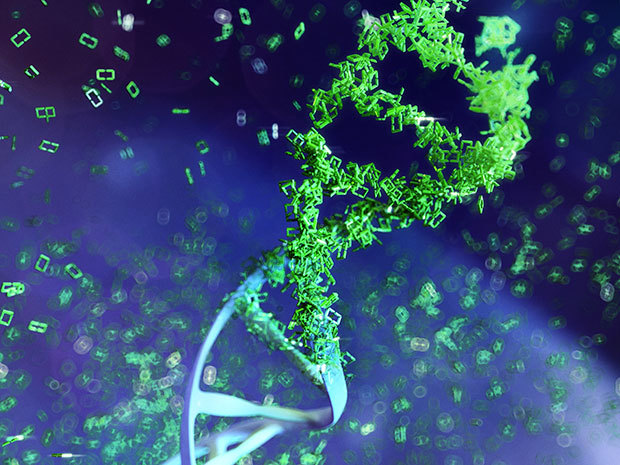Microsoft purchased 10 million strands of synthetic DNA
For experiments with long-term data storage

Microsoft purchases 10 million strands of synthetic DNA from biological startup Twist Bioscience . This amount of biomaterial is required to check whether it is suitable for long-term storage of information.
The density of information in DNA has long attracted the attention of scientists: one gram of DNA contains 1 zettabyte (billion terabytes) of data and is stored unchanged for thousands of years in appropriate conditions. Things are easy: learn how to read and write information cheaply and reliably.
In recent years, successful experiments have been carried out repeatedly with the recording of binary data into base pairs of DNA. Back in 2010, biologists from Hong Kong were able to introduce synthetic DNA into the cell of E.coli , and in 2012, scientists from Harvard recorded 643 kilobytes of data in DNA , setting a new record for the amount of recorded information.
')
For coding information in DNA, a quadruple number system is used, according to the number of nucleotides (0 = A, 1 = T, 2 = C, 3 = G). For example, experts from the Chinese University of Hong Kong translated the text into numbers on the ASCII table (i = 105; G = 71; E = 69; M = 77), then into the four-fold system (105 → 1221; 71 → 0113; 69 → 0111; 77 → 0131), and then into a chain of nucleotides.
iGem → 1221011301110131 → ATCTATTGATTTATGT
Specialists from Harvard used a different method. First, they fundamentally abandoned the use of living organisms, and introduced synthetic DNA into a molecule generated on a commercial DNA chip. Thus, the recorded information cannot be lost due to genetic mutations during the evolution of the carrier organism. Secondly, they did not use the ASCII text, but the binary code — a book file, while preserving the formatting of HTML and JPEG illustrations. The code was divided into 96-bit blocks, including the 19-bit unique address of each block (shown in red in the diagram).

Since then, data encoding techniques have gradually improved. Improved and technology for reading information from DNA. Researchers from Microsoft Research made their contribution: they recently published a scientific paper on this topic.
Twist Bioscience specializes in the technology of recording information in DNA using a special machine for the mass production of synthetic DNA, which is designed in the company. The main customers of Twist Bioscience are research laboratories that manufacture genetically modified bacteria that are necessary in certain chemical reactions for the production of specific drugs. The use of genetic material to store information is a new direction in the Twist Bioscience activity.
Custom-made synthetic DNA of a given configuration costs about 10 cents for a couple of bases. Twist Bioscience expects to reduce the price to 2 cents in the near future.
“They tell us the DNA sequence, we make the chain from scratch,” said Twist Bioscience executive director Emily Leproust about the contract with Microsoft. The manufactured biomaterial is sent to Microsoft, while Twist Bioscience bioengineers do not even know what specific information is encoded in the molecules, since they do not have the decryption key.
Under laboratory conditions, using artificial aging, Microsoft will check whether DNA will store information for 1000 years.
Information is read from DNA by genetic sequencing. Over the past 20 years, the cost of this procedure has decreased significantly. For example, the human genome sequencing project lasted from 1993 to 2003 and cost about $ 3 billion. Today, this procedure can be performed for $ 1000.
If the fall in prices continues at such a pace and it is possible to reduce the level of reading errors , the DNA can indeed be considered as an acceptable carrier of information. It is necessary to reduce prices by another 10,000 times - and the technology will go to the masses, Emily Leprust is sure.
Source: https://habr.com/ru/post/393641/
All Articles